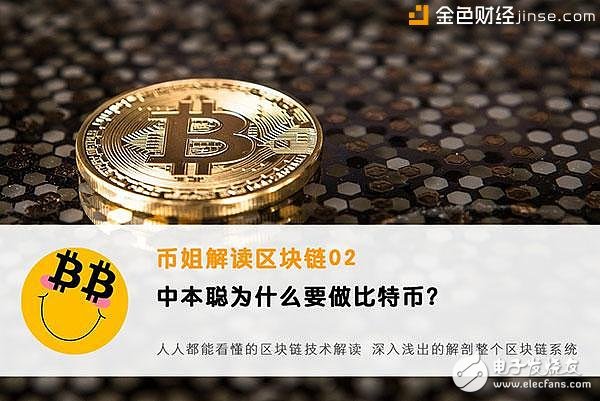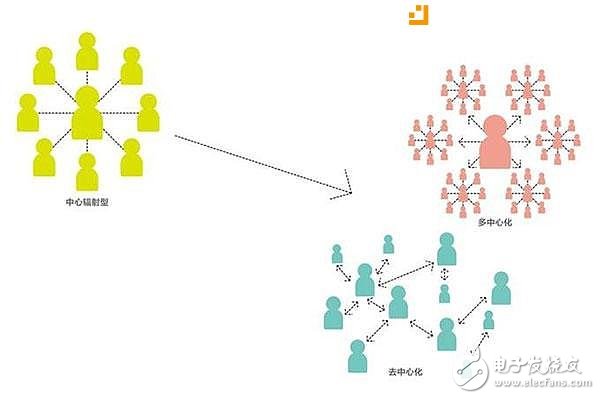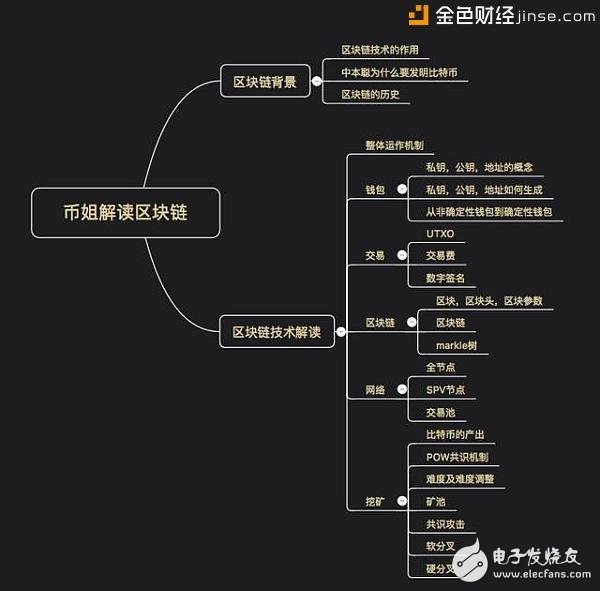
Last review: What is the magic of blockchain technology? What are you so sought after?
Lead
Edison invented the light bulb to bring light to the night, and the Wright brothers invented the plane to make people fly like birds.
So why did Nakamoto buy invented Bitcoin (the earliest blockchain)?
Today, let us take a look at the Bitcoin White Paper to see why Nakamoto has invented Bitcoin.
PS: There are many different types of blockchain technology. The following is a case study of Bitcoin.
Please note: Bitcoin blockchain chain
What problems does Bitcoin hope to solve?
In the white paper, Nakamoto has explained why Bitcoin is to be done. The simple summary is mainly to solve three problems:
Question 1: Most transactions are based on trust
It has become a common phenomenon that the company has been dragging its debts, and there are even “professional collection companiesâ€. Even if there is contract protection, many companies still do not act according to the agreement.
Transaction between individuals requires a foundation of trust. Few people are willing to trade with strangers unless there is a third party guarantee (such as Taobao).
Therefore, trust is very important in today's society. There are many businesses that suffer losses because of "trust". There are also many business opportunities because they don't trust because they don't trust.
Question 2: The existence of third-party organizations increases transaction costs and reduces transaction efficiency
The money in WeChat Alipay wants to mention that there is a fee in the bank card. (Tencent, Ali, the bank is a third-party organization)
I want to exchange foreign currency with RMB and then transfer it to friends abroad. Not only must you pay the handling fee, but you also need to wait a few days or even weeks to get the account. (State and bank are third-party agencies)
The normal operation of third parties is costly, so these costs need to be passed on to everyone. If the third-party process requires human involvement, the efficiency must be extremely low (for example, overseas transfers).
Question 3: Many scenarios have insufficient protection for sellers, and buyers can easily refund
Buy a bunch of mobile phones from the e-commerce platform for testing. After testing, return all the products and test them for free, but these phones are not brand new.
A game played for 1 month and didn't want to play, so I found a platform refund, which is equivalent to playing for free for 1 month.
The current society is more inclined to protect buyers, and sellers can only bear some grievances by themselves, and they can hardly tell. So everyone understands the sellers, don't think they make money very easily.
How does Bitcoin solve these problems?
Let us take a look at how Nakamoto has solved the above problems.
Question 1: Trust issues
In order to solve the trust problem, Nakamoto used the following methods:
Open all code open source
The code for open source programs (what are open source programs?) is completely public.
Just like the restaurant's kitchen is transparent and open, such a restaurant is more reassuring.
The open source program is even more extreme. You not only know how the kitchen is processed, but also know where the ingredients come from. The whole process is open and transparent, without any information you don't know.
All transactions are based on cryptography
Buying things on Taobao, you don't have to worry about the seller not shipping after payment, it is because Alipay has made a guarantee in the middle, if the other party does not ship, it will not receive money.
Cryptography is like a role of collateral. The parties to the transaction do not need to know who the other party is. They only need to follow the rules of the transaction, and the rest are handed over to cryptography for processing. He can do "not subject to human control," "absolutely fair," and "almost impossible to crack."
Therefore, cryptography ensures that transactions can be safe and effective without requiring any basis of trust between buyers and sellers.
Transaction records are transparent
All transaction records in Bitcoin (blockchain) are open and transparent, and everyone can find every transaction record on the network.

From the code to the data is completely open and transparent, you don't have to worry about anything getting tired.
Question 2: Third-party issues
To remove a third party, you need to decentralize. After decentralization, you need to follow a set of rules (consensus mechanism) to jointly maintain the system.
Decentralized, no third party required
Remove third-party organizations and make everyone equal in the system. No one has higher rights.
Give a chestnut:
Television and broadcasting are typical centralizations, one person said that others listen.
The English Corner is a typical decentralization. Everyone is equal. No one controls. You can find anyone to talk to.

Bitcoin is completely decentralized (Everyone is equal)
But some blockchain projects are not completely decentralized (not everyone is equal), but some operational mechanisms can also be used to solve third-party problems.
Consensus mechanism binds personal interests and system benefits together
Who will manage it after everyone is equal? How do you divide the work?
On the basis of equality for all, the consensus mechanism of POW (what is the consensus mechanism?) is introduced. Under this mechanism, the interests of each participant and the interests of the entire Bitcoin system are highly consistent. So everyone will try to maintain this system.
Why is this mechanism able to tie personal interests and system benefits together? Then you need to understand the operation mechanism of the entire system of the blockchain.
Question 3: Refund issue
Transaction records cannot be tampered with
Many people compare the blockchain to a big book, and this metaphor is still very image.
On this ledger, the transaction is recorded once. This record cannot be modified by either the transaction or any third party.
The data structure and operational mechanism of the blockchain ensure that all data can be recorded and cannot be tampered with.
to sum up
Today we introduced the cause of the invention of Bitcoin by Nakamoto:
There are many uncertainties in transactions based on trust.
Third-party organizations increase transaction costs and reduce transaction efficiency
Seller will suffer losses due to refund
In order to solve the above problems, Nakamoto used a lot of moves:
Open all code open source
All transactions are based on cryptography
All transaction records are transparent
Decentralized, no third party required
Consensus mechanism binds personal interests and system benefits together
Transaction records cannot be tampered with
The next notice: What are the wonderful stories in the history of the blockchain?
How was the blockchain born? How did it evolve? What events are iconic? The next issue will come for everyone.
Article directory:

Business Style Leather Phone Case
Business Style Leather Phone Case,Cover Leather Case,Flip Cover Leather Case,Genuine Leather Case
Guangzhou Jiaqi International Trade Co., Ltd , https://www.make-case.com